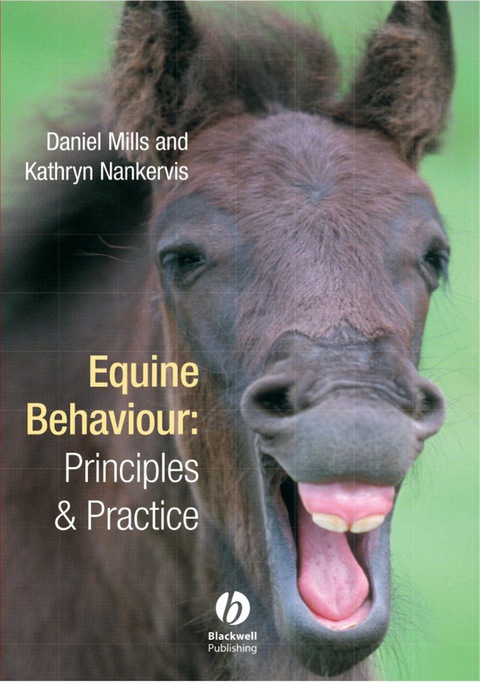Description
Efnisyfirlit
- Title Page
- Contents
- Preface
- Acknowledgements
- Part One: Understanding Behaviour Concepts
- 1 Approaches to the Study of Behaviour
- What is behaviour
- Ethology versus psychology
- A brief guide to conducting a behaviour study
- Conclusion
- Topics for discussion
- References and further reading
- 2 Origins of Behaviour
- An evolutionary approach to understanding behaviour
- Lamarck versus Darwin
- Genes not individuals
- Evolutionary throwbacks and genetic jumps
- Adaptation and apparent stupidity in domestic horses
- Evolution and the variety of behaviour
- Conclusion
- Topics for discussion
- References and further reading
- 3 The Evolutionary History of the Horse
- Introduction
- Early evolution of the horse
- The arrival of Equus
- The origins of the modern breeds
- Domestication and its consequences
- Topics for discussion
- References and further reading
- 4 The Lifetime Development of Behaviour
- Instinctive and learned behaviour, what is the difference?
- Sensitive phases for special times and specific associations
- Using play for better management
- Using natural biases in development to improve management
- Conclusion
- Topics for discussion
- References and further reading
- Part Two: Mechanisms of Behaviour
- 5 The Processing of Information
- Introduction
- The nervous system
- Neural transmission
- Central processing
- Behavioural motivation
- Autonomic and somatic nervous systems
- Topics for discussion
- References and further reading
- 6 The Special Senses
- Sight
- Hearing
- Chemoreception
- Cutaneous sensation
- Topics for discussion
- References and further reading
- 7 Communication and Social Organisation
- Communication
- Social organisation
- The composition of the group
- The social structure of the group
- The dynamics of the group
- How horses defend their resources
- Conclusion
- Topics for discussion
- References and further reading
- 8 Sexual and Reproductive Behaviour of Horses
- Basic genetic foundation of the individual’s sexuality
- Normal mare specific behaviour
- Normal sexual behaviour of the stallion
- Modifiers of the genetic blueprint
- Conclusion
- Topics for discussion
- References and further reading
- Part Three: The Flexibility of Behaviour and its Management
- 9 Learning and Training
- Psychological processes
- A few basic procedures
- Applying reinforcement to train new behaviours
- Punishment and its problems
- General guidelines to training new behaviours
- Learning beyond a change in behaviour
- Training techniques for problem behaviours
- Conclusion
- Topics for discussion
- References and further reading
- 10 Welfare
- Understanding welfare
- What is right is not always the same as what is good
- Measuring welfare
- Is the domestic horse a fish out of water?
- Stereotypies
- Principles of treatment for stereotypies and other behaviour problems
- Conclusion
- Topics for discussion
- References and further reading
- Appendix
- Index






Reviews
There are no reviews yet.